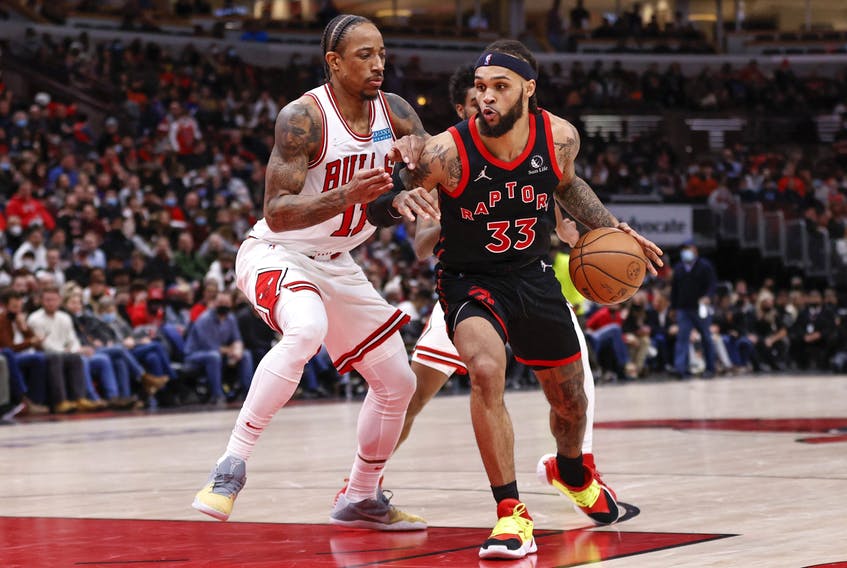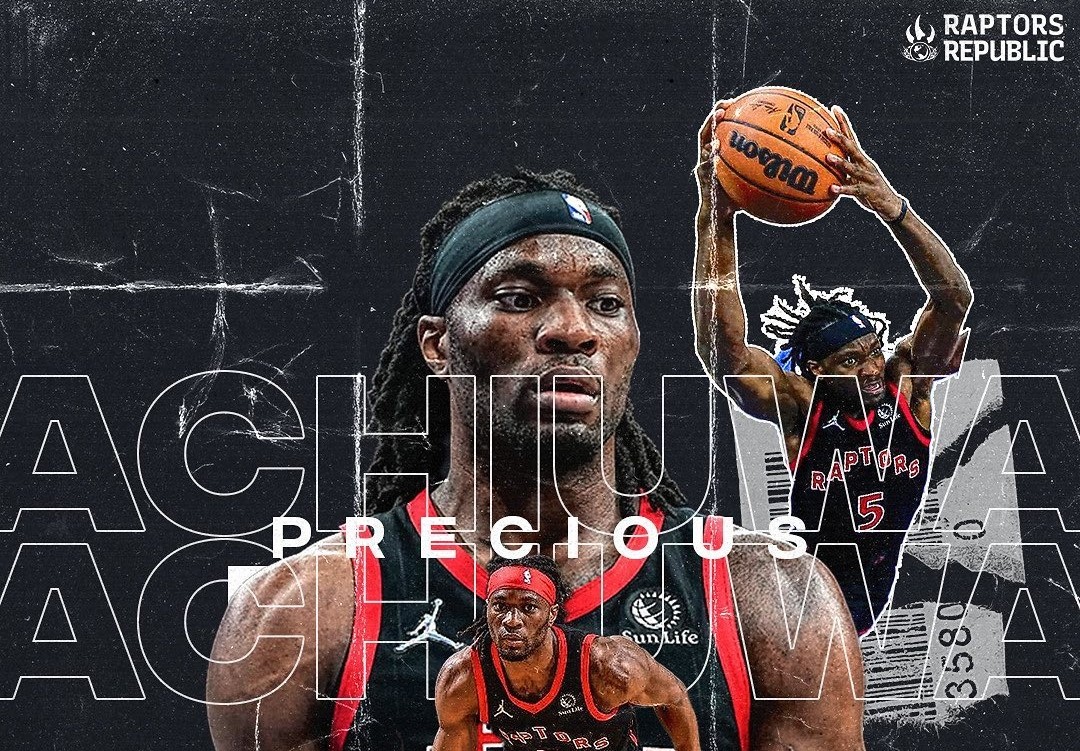The year is 2016. The Raptors will eventually finish 51-31 before getting swept in the playoffs by the Cleveland Cavaliers. But there’s far more hope to begin the season. The Raptors won two straight against Cleveland in the playoffs the year before, tying the series 2-2, and in the offseason they draft Jakob Poeltl and Pascal Siakam in the first round, signing Fred VanVleet as an undrafted free agent. The team starts out hot, toppling Goran Dragic and the Miami Heat in the season opener behind 34 points from DeMar DeRozan. Then he scores 40 against the Washington Wizards. Thirty three against the Denver Nuggets, 32 against Cleveland. Toss in another 40-piece against the Detroit Pistons. When the dust settles, the Raptors are 4-1, with their only loss to Cleveland, and DeRozan has set the franchise record for most consecutive 30-point games, at five. (He hits the 30-point mark in five of the team’s next seven games, besides.)
Hopes were high, and the team’s identity was ironclad. Made of rock, if you will. Rock made for pounding.
As Gary Trent jr. tied DeRozan’s record on February 1 against the Miami Heat, things are very different. Gone is the old guard, and now Siakam and VanVleet are the team’s leaders rather than untested rookies. They combined to win a G-League championship in 2016-17, went on to combine for an NBA championship in 2018-19, and are now combining to pull Toronto out of the dregs of the Tampa Bay season from hell. (I wonder which of those three achievements are most difficult. Probably redeeming the city of Tampa.) Nowadays, the team identity is mutable yet promising. The Raptors are a defensive menace — most of the time. They’re a diverse offensive team — most of the time. And one of the team’s most promising players, traded for Norman Powell (a sophomore when DeRozan set the 30-point mark), is Trent. His place in the offensive hierarchy is, like the Raptors themselves, changing and changeable. Yet he seems to be in a constant state of ascension.
Trent’s streak began against the Charlotte Hornets, as he plastered Terry Rozier. He continued it against DeRozan and the Bulls, outscoring the former Raptor in an eventual loss. The Heat, the Hawks, the Heat again — Trent’s scoring has been a consistent in an impressive 4-1 stretch for Toronto against some of the best middle-class teams in the East. These teams are Toronto’s competition in the race to the playoffs, and behind Trent, the Raptors are now 26-23, eighth in the East and closing on a higher position. Next up: the Bulls again on February 3, and Trent gets a chance to break DeRozan’s record against DeRozan himself.
They’re very different players. DeRozan did much of his work from the midrange and the free throw line. He hit one triple, total, in those five games. Yet he hit no fewer than six free throws in any of the games. Trent on the other hand has hit a ridiculous 31 triples during his stretch, most in the league over anyone’s last five games. He’s hitting catch-and-shoot jumpers, stepbacks, sidesteps, pullups — you name it, he’s drilling it. He’s got a lightning-quick release, and Toronto is so starved for spacing that offensive possessions are constantly funneled to Trent.
DeRozan averaged 64.4 touches a game in 2016-17. Trent, now, is averaging more than 20 fewer than his predecessor. He is not DeRozan’s successor, not literally. He’s more of a flash in the pan — less bedrock and more fleck of gold. DeRozan was the river in which you pan, containing both rock and gold. Perhaps Trent is more of a spiritual successor, or at least one in the making.
But Trent could be so much more. Like DeRozan, he still has holes in his game. But weirdzo holes, the inverse of DeRozan’s. Whereas DeRozan never learned to space the floor beyond the arc, especially without the ball, Trent is an elite-plus shooter yet a middling finisher at the rim. Trent doesn’t have the burst, length, or extension to finish around or through opponents, so he’s often left trying to loft awkward hook layups over contests. He’s currently attempting a miniscule 10 percent of his shots at the rim and converting just over 50 percent — a far cry from DeRozan’s 66 percent at the rim in 2016-17.
Trent of course still needs to add to his passing game. He has an shriveled assist rate and has very little craft in manipulating defenses to create for others. When he’s blitzed, he generally resets the offense by throwing a get-out-of-jail pass rather than maintaining that advantage in hitting a home run pass.
All that means, of course, is that Trent still has oodles of room to grow. He’s tied DeRozan’s record without those skills. Crazy. In Jeff VanderMeer’s Borne, the eponymous Borne (spoilers ahead!) is a killing machine, an organism still learning himself and his place in the world, and doing so by “tasting” those in the world around him. He starts small, but he doesn’t stay that way. He’s awkward and loping but with large designs on life.
That’s what Trent seems like now for the Raptors. Of course, he won’t become a speed demon, or grow jetpacks in his legs, or add a foot of length to his arms, so it’s unlikely he’ll ever become a rim-oriented player. But he, like Kyle Lowry and VanVleet before him, can learn to use his body on the ground to create layups in the air. He can simplify his finishes. He can learn to throw higher-velocity passes that capitalize on his defensive attention. There’s much he can learn that he can learn, even if some elements of the game remain off-limits to him (which is sort of true for almost every player in the NBA — very, very few players can become great at everything).
And what will he be then? It’s unlikely that the tides of change once again wash over the Raptors with Trent still on the roster, with VanVleet and Siakam passing the offensive mantle to Trent and Barnes and perhaps others. But this team’s identity is far from set. It has been playing several minutes a game with five players, all standing six foot nine, generating offense almost entirely through their ability to force turnovers. Translation: Nick Nurse and the Raptors are willing to try anything.
That’s not where the 2016-17 Raptors stood. They pounded the motherfucking rock until the cows came home. And then they came home, and Nurse replaced Dwane Casey. Now Trent is, in some ways, replacing DeRozan. He’s far, far from becoming one of the key architects of this franchise. But he’s matched one of his many records. And on Thursday he’ll have a chance to break it against the architect himself. The Raptors are fluid, like Trent himself. Maybe he’s a gunner on a hot streak. Maybe he’s the next DeRozan. Either way, he lives and dies anew with each feathery jumper he lofts at the rim. So too, increasingly, do the Raptors.



